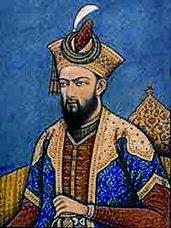Meta Description: Discover the last 27 years of Mughal Emperor Aurangzeb's life, marked by personal losses, military campaigns, and a turbulent crisis of succession. Based on reliable historical sources.
Introduction
The final 27 years of Aurangzeb’s reign (1680–1707) were among the most dramatic and defining periods in Mughal history. While Aurangzeb is often remembered for his military might and orthodox religious stance, the twilight of his life was plagued with personal losses, unending warfare, and a deepening crisis over succession. This blog offers a humanised and historically grounded look at how the Emperor’s final decades shaped the fate of the Mughal Empire.
The Turn to the Deccan: An Empire Overstretched
In 1680, following the death of his most formidable rival, Shivaji, Aurangzeb turned his full attention to the Deccan region. Determined to bring the Marathas, the Bijapur Sultanate, and the Golconda Kingdom under direct Mughal control, he personally led campaigns in the south.
Unlike earlier Mughal emperors who ruled from Delhi or Agra, Aurangzeb shifted the imperial court permanently to the Deccan, spending the final 27 years of his life there. Though he achieved the military conquest of Bijapur (1686) and Golconda (1687), the Maratha resistance proved far more resilient.
Endless Wars and Exhaustion
The Marathas, under leaders like Sambhaji (Shivaji’s son) and later Rajaram and Tarabai, turned to guerrilla warfare, harassing Mughal supply lines and draining imperial resources. Despite temporary victories, Aurangzeb was never able to fully suppress the Marathas.
The prolonged campaigns took a devastating toll. The imperial treasury was drained, Mughal officers were demoralised, and the emperor himself grew weary and frustrated, even into his eighties. His letters from this period, particularly those compiled in the "Ruq‘at-i-Alamgiri", reveal a tired ruler reflecting on the futility of war and the burdens of power.
The Death of Loved Ones
Aurangzeb's later years were also marked by profound personal loss. His wife, Dilras Banu Begum, had died earlier, but in the Deccan he experienced the deaths of his favourite daughter, Zeb-un-Nissa, and his trusted general, Bahadur Khan. These losses deeply affected the ageing monarch.
Zeb-un-Nissa, known for her intellectual brilliance and poetic talent, was once Aurangzeb’s close confidante. However, tensions reportedly developed due to political and religious differences. Whether imprisoned or merely sidelined, her death in 1702 left Aurangzeb emotionally broken.
Crisis of Succession: A Father’s Dilemma
Aurangzeb’s later years were haunted by a succession crisis. Unlike his own brutal rise to power—where he imprisoned his father Shah Jahan and executed his brothers—Aurangzeb hesitated to name a clear successor among his sons.
He had three prominent sons:
-
Muhammad Azam Shah – ambitious, confident, but impulsive.
-
Shah Alam (Muazzam) – experienced and moderate, but seen as too lenient.
-
Kam Bakhsh – the youngest and least politically competent.
Instead of unifying the empire, these princes engaged in court intrigues and factionalism, all vying for favour. Aurangzeb’s failure to clearly resolve the succession before his death paved the way for civil war, similar to the one that brought him to power.
Reflections of an Emperor in Decline
Historical sources such as Khafi Khan, Ishwar Das, and Aurangzeb’s own letters present a sobering image of the emperor in his final years. Despite his military campaigns, he began to question the value of conquest and kingship.
In one poignant letter to his son Azam, Aurangzeb wrote:
“I came alone and I go as a stranger. I do not know who I am, nor what I have been doing.”
This was not the voice of a triumphant ruler, but that of a weary man, crushed by the burdens of power and introspection.
Death and Aftermath
On 3 March 1707, Aurangzeb died at the age of 88 in Ahmednagar, after spending nearly 27 years in the Deccan. True to his ascetic beliefs, he was buried in a simple grave in Khuldabad, without any grand mausoleum—unlike the Taj Mahal built by his father.
Following his death, a succession war erupted between his sons. Eventually, Shah Alam (Muazzam) emerged victorious and took the title Bahadur Shah I, but the empire never regained the same central authority. The Mughal dynasty began a slow and irreversible decline, hastened by the very wars and policies Aurangzeb had pursued.
Conclusion
The final 27 years of Aurangzeb’s life reflect the duality of his character—a powerful emperor and yet a lonely man, a skilled general but a failing administrator, a devout ruler but a grieving father. His relentless campaigns, personal losses, and indecisiveness about succession ultimately undermined the very empire he worked so hard to expand.
Aurangzeb’s twilight years stand as a compelling lesson in history: when ambition outpaces wisdom and empathy, even the mightiest empires can crumble from within.
If you enjoyed this article, consider subscribing to our history blog for more in-depth explorations of India’s royal past.



No comments:
Post a Comment